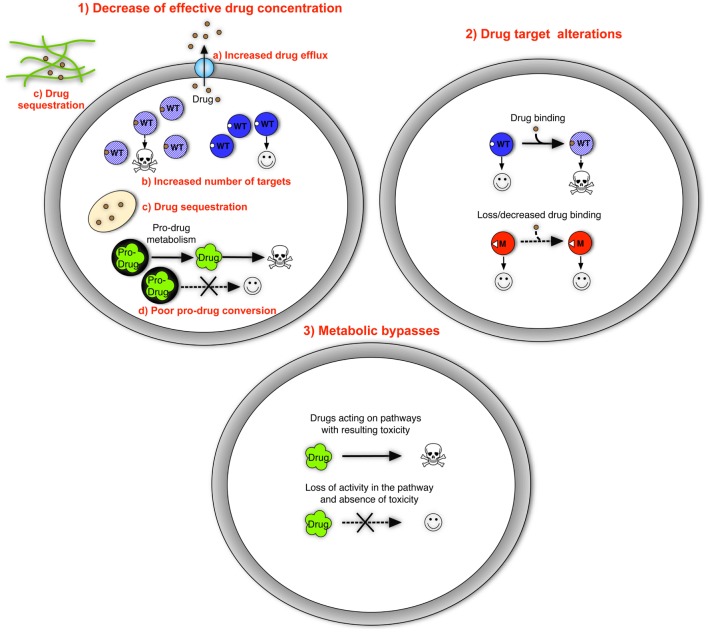Figure 1.
The three basic resistance mechanisms to antifungal drugs. They include (as listed in the text) (1) decrease of effective drug concentration with specific mechanisms including increased drug efflux, increased number of targets, drug sequestration of extracellular and intracellular origins, and poor pro-drug conversion; (2) drug target alterations; and (3) metabolic bypasses. Genome mutations are generally responsible for these three basic principles. Drug sequestration can be mediated by the formation of matrix polymers in biofilms, a state of cells that is not dependent on the occurrence of genome mutations. Wild type proteins are represented by blue circles catalyzing cellular functions; blue-shaded circles represent proteins blocked by drugs in which cellular functions are blocked causing decreased growth or death. Mutant proteins are represented by red circles. Drugs are represented with different symbols. Symbols: WT, wild type; M, mutant.

